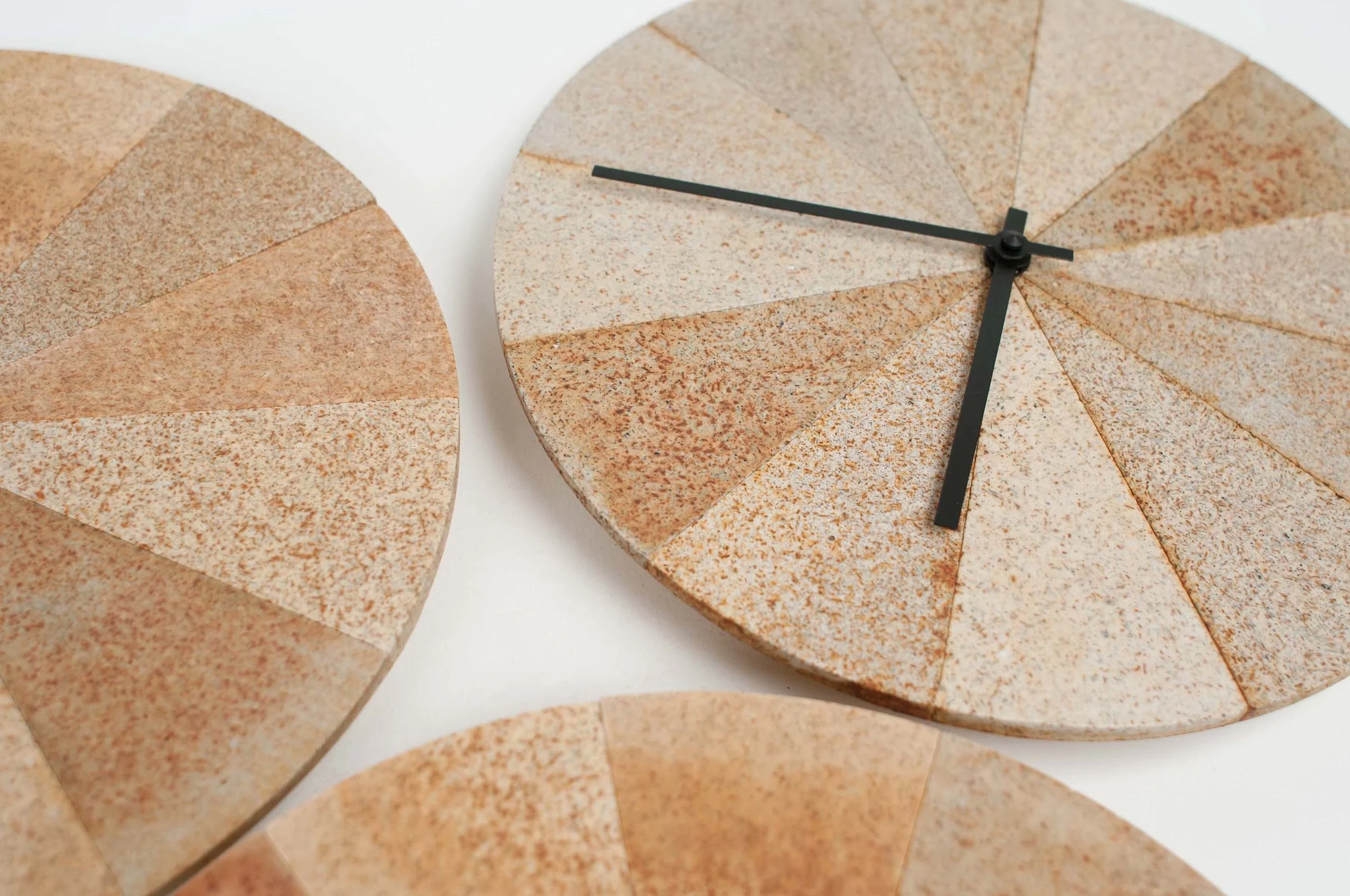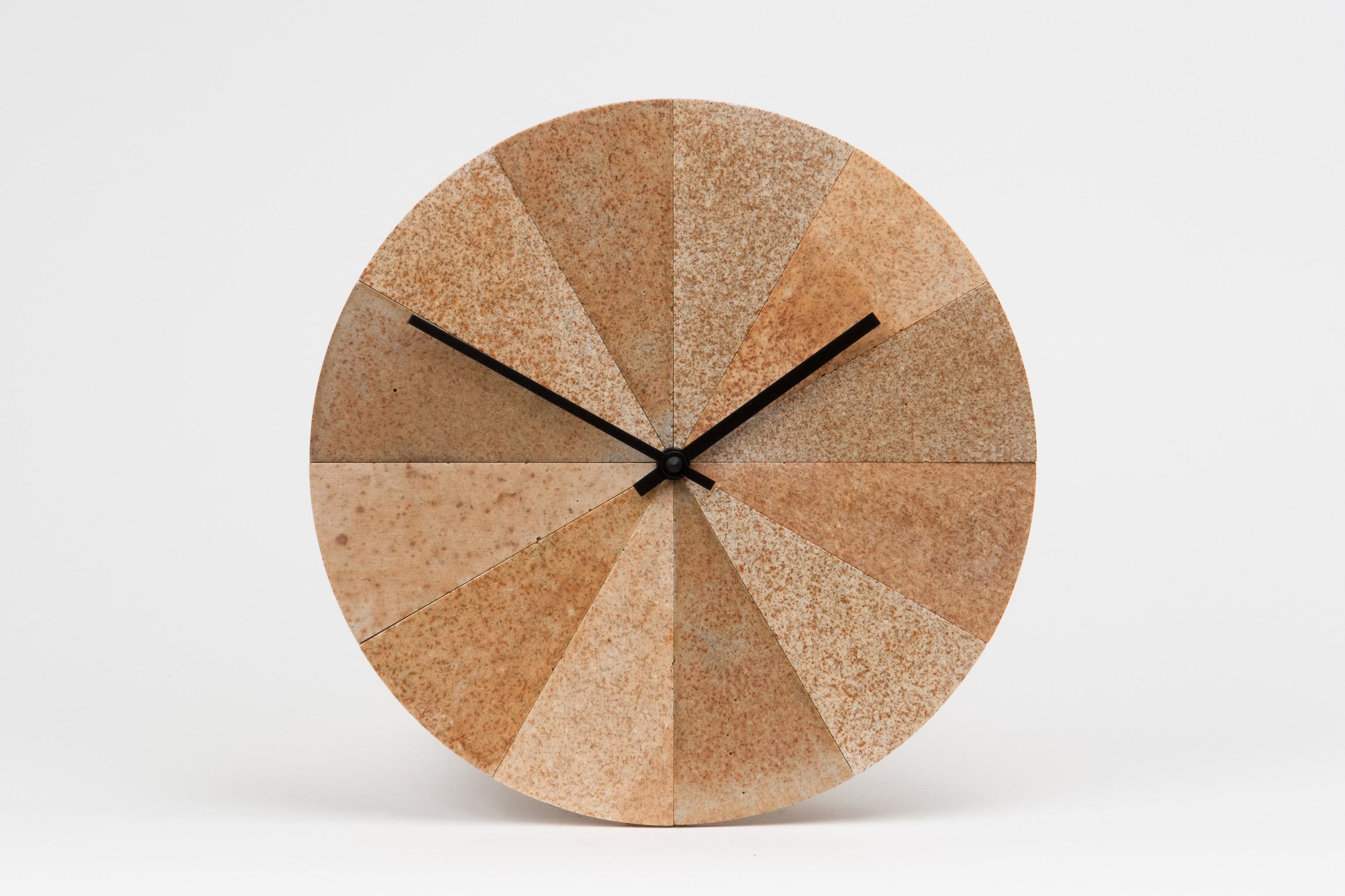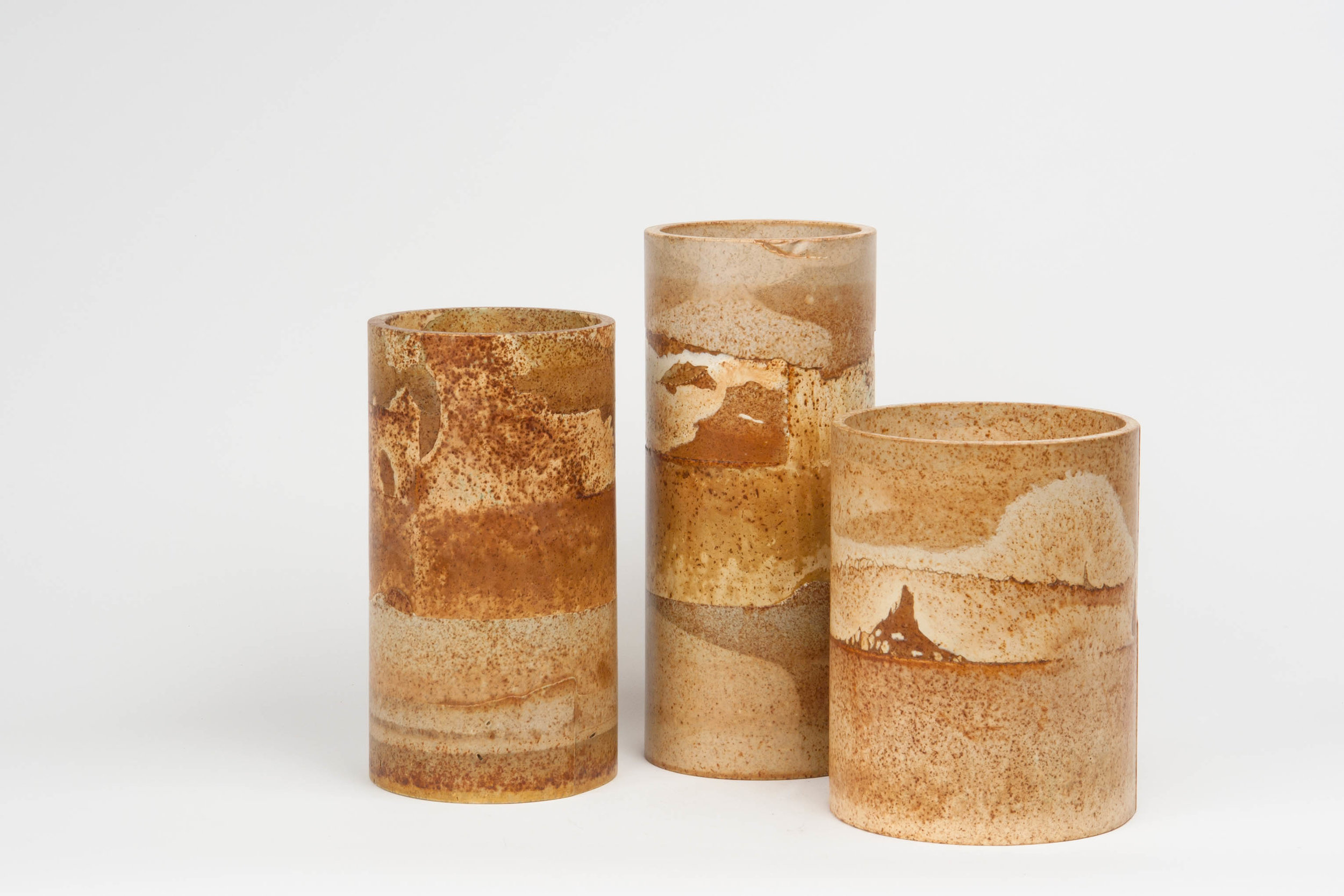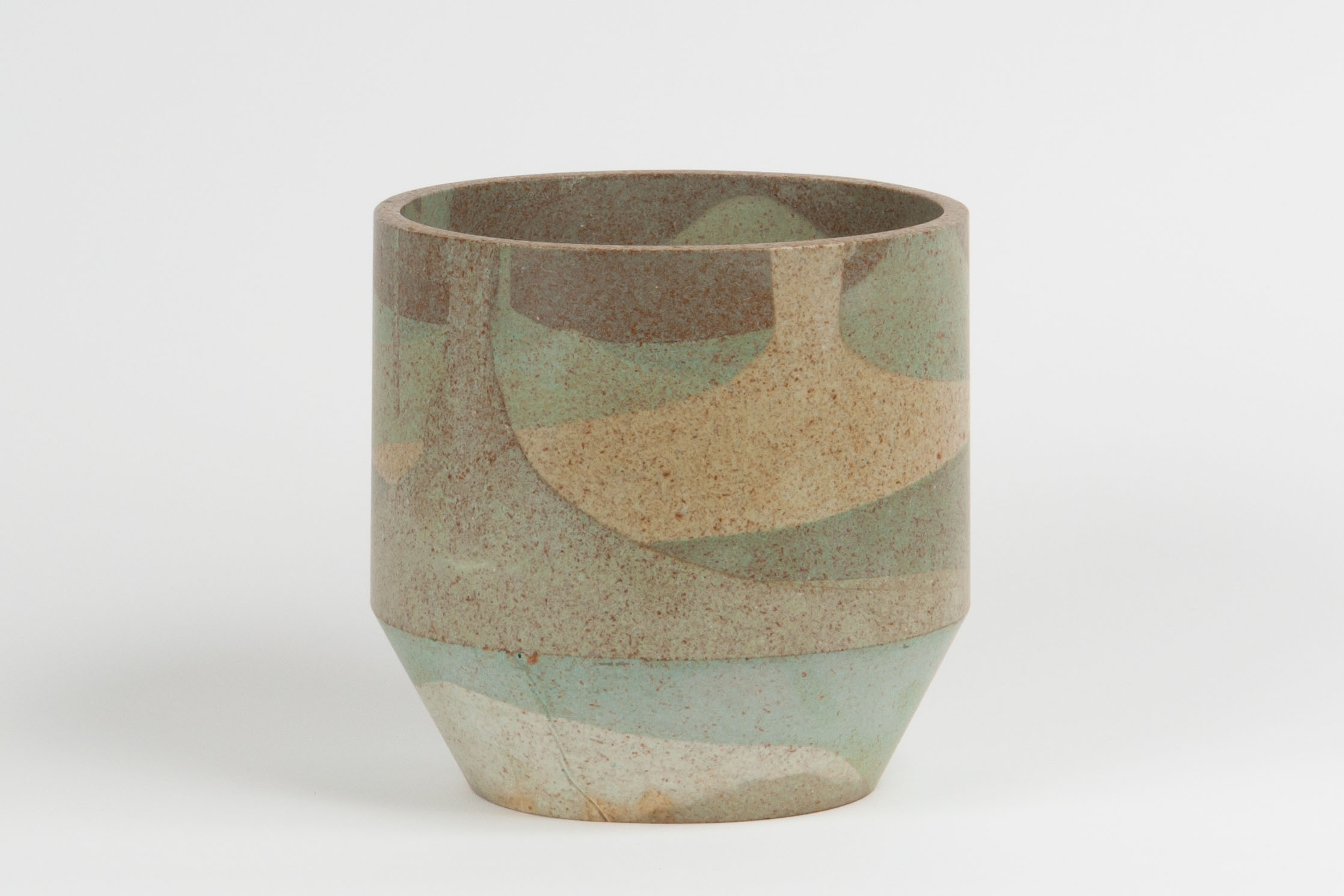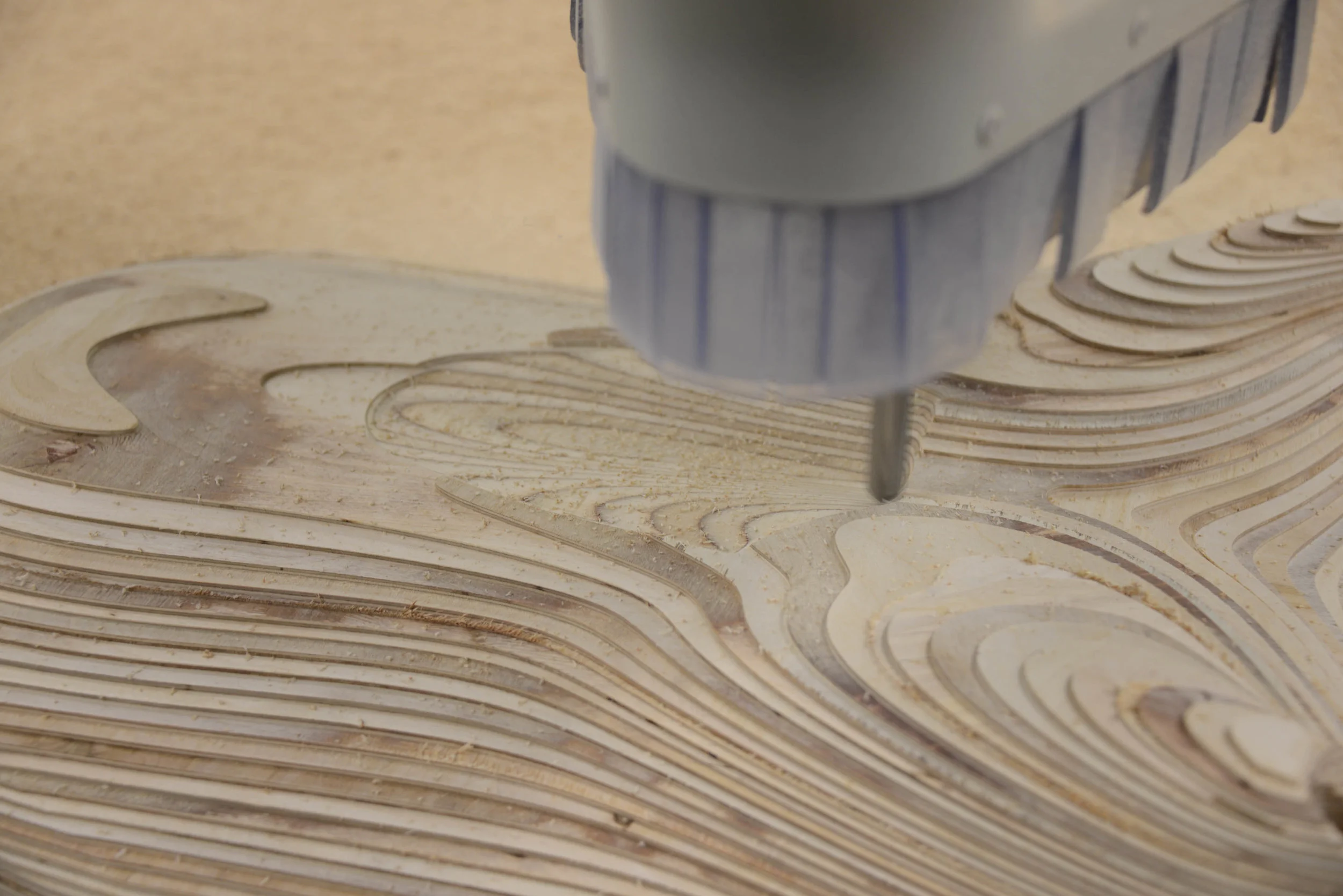Ariane Prin creates regenerative design, rooted in it's site and community
I remember the first time I saw designer Ariane Prin's RUST collection–a range of vessels, objects, and surfaces, all of which seem to possess a gritty and aged quality. Despite Ariane's role in composing their base material, shaping the vessels, and triggering their aging process, the result felt subtle and distinctly natural.
At that point, my curiosity led me further, and I learned that a vital component of the RUST collection, and its material, is metal dust–accumulated as waste in metalworking shops across London. From being a non-recyclable waste, it had been reappropriated by Ariane into a core component of a new material and was at the heart of beautifully aged, artisanal design products.
Flash forward a few weeks, and I am speaking with Ariane–probing into her design history, and learning where the roots of her distinct and inherently regenerative approach to design and materials lie. Ariane's collection RUST is after all one of several projects by her that comprehend and embrace the waste of a particular social and environmental context. In each of these projects, Ariane then reorients that waste into being a raw material for new making, intended for that very context and its community.
Above: A tray, from Ariane Prin's RUST Collection
Below: A gallery showing a clock, vases and cache pot from the RUST Collection
As I speak with Ariane, it becomes apparent that this design approach–emergent from a site, its people and its activities–is not one that she simply adopted one day. Beginning with her childhood–where she grew up in the French countryside, with a natural appreciation and comprehension of sorting garbage and wastes–to her education at design schools, where necessity prompted her to look into the schools' discarded material and find raw materials for her own design models and experiments. In this way, Ariane's respectful and restorative perspective of materials is deep-rooted and enriched by her own history.
Ariane's 2011 project 'From Here to Here' began while she was studying at the Royal College of Art (RCA), and gave birth to a new production system, where useful products specific to the site were generated from the waste of the school. Having observed the massive amount of waste material collected at the prominent design school–a whole 'Skip' full every week– the RCA became a natural experimental site for Ariane, for testing this new approach and production method. The project used waste from various departments of the school, towards a local pencil factory (process seen in the video below), which then supplied drawing tools to present and future students of the design school.
A second, and magnified version of 'From Here to Here' was conducted by Ariane in 2012, and reproduced this method at the scale of a whole district. As part of the New Windows on Willesden Green initiative–a project financed by the Mayor’s Outer London Fund, ‘From Here For Here #2’ was centered in a shop in Queens Parade, London. The store allotted to Ariane became a retail/workshop space where she created and displayed the making of objects (such as lamps, bags, key fobs, stools) from waste materials given by local businesses. Not only were beautiful and useful products generated; but each object was also tagged with the name of its waste contributor–highlighting and publicizing the individual shops and feeding into their growth.
The two phases of this project are a distinct signature of Ariane's role and acts as a designer, and how different they are from that of others. Not created for the sake of simply making, or to fulfill artistic ambition, Ariane's work is instead driven by the idea of 'design as service.' She says "You go into a community; You approach the people and analyze their situations and needs, and then only you begin making products. The output is always unpredictable."
This intent–to be in close contact with a site, community, and broader context–spills over as Ariane's desire to be deeply connected with the making of her works as well. Her RUST collection, extensive in variety and volume, and celebrated by the design community, is surprisingly all created by her–handmade inside of her London studio. Interested in pursuing small-scale production, and testing its long-term viability, but also consciously veering away from being only a 'designer' (who ships his/her designs to a manufacturer) rather than a maker, she finds these consuming acts of making empowering, and insightful.
Ariane with her RUST collection,, in the studio. Image by Ariane Prin - Color portrait - PC Tommaso Lanza
Ariane's close contact with making, are no doubt at the heart of her innovation with materials as well, especially for the RUST collection. Examining the powdery waste from key-making shops and other metalworking shops in London, she learned that the blend of metals such as steel, copper, and brass didn't recycle well at all. But the very same mix oxidized quickly–leaving behind a pleasant, rusted, aged quality–during the making of her vessels, as well as blended well with a gypsum based material to create a beautiful new cast. There was a clear discovery here for Ariane–how a substance that is bad for one business can feed into another and benefit it.
Ariane tested the collected metal dust–a blend of metals such as steel, copper, and brass–and its many variations in an oxidized form for her RUST collection. Seen here, are samples created during the making of this collection.
These are values that align with the concept of the circular economy, and Ariane's work is exploring them in the most meaningful of ways. Her context-driven approach, along with her material experiments, lend themselves to external collaborations with, and influence from inter-disciplinary players such as craftsmen, bakers, hairdressers, acrobats, biologists and engineers in environmental technology. This widens the scope of influence of Ariane's work, and enlarges the possibilities for the spread of her signature approach amongst design and other disciplines. At the same time, the custom material developed by her for the RUST collection itself holds immense potential–Ariane continues to test and push its boundaries every day and can imagine applications as large as the scale of architecture as well.
The custom material developed by Ariane for the RUST collection holds immense potential, both for large scale applications and forms, and its own evolution/iterations as a material.
Beyond these aspirations, partnerships, and openings for collaboration, there is a subtle influence that has played into Ariane's work, from her time as a post-graduate exchange student in Japan. She owes a particular pursuit of perfection through repetition, as well as her respect for materials, to the craft and making she witnessed in Japan, especially that in ceramic workshops. Here, she saw Japanese ceramicists and students spend endless hours repeating the same forms and actions, seeking perfection. These qualities are subtly imbued in Prin's own work, as she persistently investigates materials and forms, seeks to understand the basis of her site-specific works, and makes each of her elegant creations patiently by hand.
Readers, if you would like to learn more about Ariane's work, follow this link to her website. And if you would like to learn more specifically about the RUST collection, and acquire pieces from it, click here.





